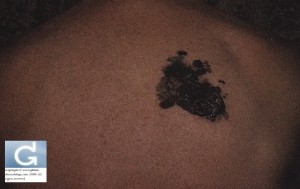Sunprotection
- The sun is our ally because it is an indirect source of vitamin D production and contributes to our psychological well-being.
- However, the sun is also dangerous and participates actively in the development of skin cancers, melanoma being one example.
- Accessorily (if it can be said so), it is responsible for accelerated skin aging (wrinkles, pigmentation problems, yellow skin).
- The effects of sunlight are cumulative. Sun damage is therefore dose-dependant. Everyone is born with a determined “skin capital sum” which can be eroded by ultraviolet (UV) rays which reach the cells of the skin.
- In a natural way which is genetically determined, everyone is given protection mechanisms, which includes melanocytes which are the melanin synthesizing pigment cells of the skin. Melanin protects us. However, individuals with a lighter skin make less melanin and are therefore less protected. Moreover, “red heads” synthesize phaeomelanin in response to UV exposure. This type of melanin increases the damage done by UV rays.
- Sun protection
- Before applying a sunscreen, it is best to adopt a behavioural approach to sunprotection:
- Wear a wide-brimmed hat.
- Wear sun protecting clothing, that is which is tight woven. Some clothes carry a logo indicating it protects against UV light. Cotton T shirts have a maximal sun-protection factor (SPF) of 6. What does SPF mean? click here
- Avoid going under the sun between 10 AM and 4PM.
- Remember that UV rays can be reflected by light surfaces such as sand aand snow, so that you can also get sunburnt even if in the shade.
- NEVER use a tanning bed.
- Protect your children. Indeed, 85% of the total life exposure takes place before age 18.
THEN
- On the remaining areas still exposed to sunlight, apply a sunscreen 30 minutes before going under the sun. This is to allow the active substances of the cream to interact with the cells of the skin. To know more about sunscreens and appropriate SPF (sun-protection factor), click here
- Apply the cream at regular intervals, more frequently if you go swimming. To learn more about how often you must apply sunscreen, click here
Category : prévention du cancer de la peau - Modifie le 06.3.2010Category : prévention du vieillissement de la peau - Modifie le 06.3.2010Category : prevention of skin aging - Modifie le 06.3.2010Category : prevention of skin cancer - Modifie le 06.3.2010Category : Protection solaire - Modifie le 06.3.2010Category : sunprotection - Modifie le 06.3.2010



